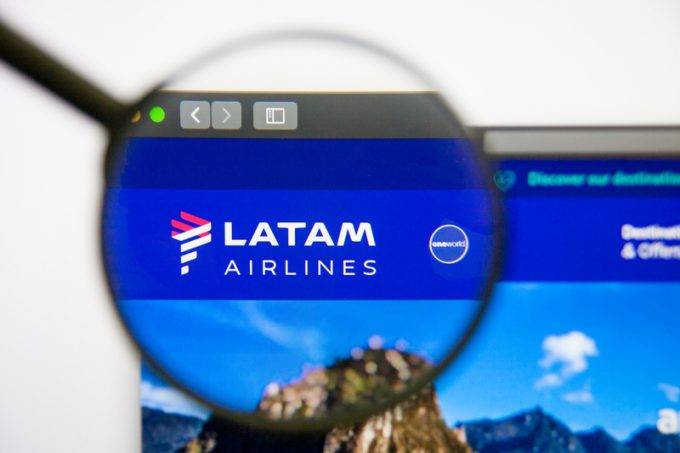US mega-airlines grow cargo volumes, but miss out on ecommerce boom
The three US mega-airlines – Delta, United and American – expanded their cargo traffic in ...
GM: RAISING THE ROOF GGM: IN FULL THROTTLE GZIM: MAERSK BOOST KNIN: READ-ACROSSMAERSK: NOT ENOUGHMAERSK: GUIDANCE UPGRADEZIM: ROLLERCOASTERCAT: HEAVY DUTYMAERSK: CATCHING UP PG: DESTOCKING PATTERNSPG: HEALTH CHECKWTC: THE FALLGXO: DEFENSIVE FWRD: RALLYING ON TAKEOVER TALKODFL: STEADY YIELDVW: NEW MODEL NEEDEDWTC: TAKING PROFIT
GM: RAISING THE ROOF GGM: IN FULL THROTTLE GZIM: MAERSK BOOST KNIN: READ-ACROSSMAERSK: NOT ENOUGHMAERSK: GUIDANCE UPGRADEZIM: ROLLERCOASTERCAT: HEAVY DUTYMAERSK: CATCHING UP PG: DESTOCKING PATTERNSPG: HEALTH CHECKWTC: THE FALLGXO: DEFENSIVE FWRD: RALLYING ON TAKEOVER TALKODFL: STEADY YIELDVW: NEW MODEL NEEDEDWTC: TAKING PROFIT

Delta and LATAM’s alignment is rocking the passenger market in the Americas, but it is unclear at this stage how it will affect the cargo sector.
The US carrier is forking out more than $2bn to beef up its presence in the North-South America market, paying $1.9bn for a 20% stake in Latin America’s largest carrier, bringing a presence on the board, and $350m to build up their strategic alliance.
Under their agreement, announced on September 26, Delta has pledged to acquire four A350 XWB aircraft from its Latin partner, and it will assume LATAM’s commitment to buy 10 more, due for delivery between 2020 and 2025.
Delta already has 13 A350s in its fleet and stands to receive another 12.
The announcement was a bombshell, as the deal aims to create a combined network of 435 global destinations, and together the two carriers will command the leading position in five of the top six US-Latin America passenger markets.
The fact that LATAM has turned to a new US partner comes as no surprise, though. CEO Enrique Cueto Plaza said the ruling of Chile’s supreme court this year to block a proposed joint venture with American Airlines and IAG prompted LATAM to seek other options.
American commented that “given the recent negative ruling, which would have significantly reduced the benefits of our partnership (…), we understand LATAM’s decision to partner with a US carrier that isn’t burdened by the ruling.” The airline also announced new services from Miami to Lima, Santiago and Sao Paulo for next year.
From a cargo vantage point, the unravelling of LATAM’s collaboration with American will have virtually no impact, as this has played out exclusively on the passenger side.
LATAM and Delta intend to start with codeshare arrangements, followed by filing for antitrust immunity. Mr Cueto expressed confidence that the courts will not block this alliance, as it would have a less commanding position in the market than a LATAM-American venture.
But the shift leaves a number of other questions. Not surprisingly, LATAM intends to leave the oneworld alliance in due course, but it is unclear how things will pan out with oneworld member Qatar Airways, which holds a 10% stake in LATAM.
It also remains to be seen how its collaboration with IAG will evolve. According to Mr Cueto, their commercial agreement will remain in place.
LATAM’s shift from American to Delta is also a blow to AA’s home base, Dallas/Fort Worth Airport, which has been trying to position itself as a conduit for cargo flows between Asia and Latin America and has been trying hard to attract a South American freighter service to that end. LATAM’s new alignment undermines slim hopes in Texas that an American-LATAM partnership would help get a LATAM freighter connection.
Is DFW’s loss Atlanta’s gain, then? A senior industry executive, speaking privately, noted that LATAM’s freighter activities were firmly anchored in Miami, where the airline has built up a strong cargo presence. In early September, LATAM Cargo announced the launch of twice-weekly all-cargo flights between Miami and Lima and the addition of 12 weekly freighter frequencies between Bogota and Miami.
“They’re not likely to get the freighters to Atlanta, but if LATAM shifts passenger flights there, that would open some interesting possibilities for belly cargo,” he reflected.
LATAM Cargo’s collaborative efforts with other airlines have concentrated chiefly on interline arrangements to serve intercontinental markets. Main deck connections to Asian destinations have been a major target there.
The heads of cargo at LATAM and Delta had no comment on ramifications of the alliance announcement on their business at this point.
Comment on this article